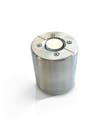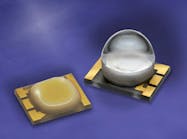The 1775 IMU is the premium high performance inertial measurement unit offered by KVH. Designed as a commercial off the shelf product, the 1775 IMU nevertheless is used in the most challenging environments, such as military systems requiring extremely high performance. The 1775 IMU joins the KVH portfolio of high performance IMUs built with the proven technology of the DSP-1750 and DSP-1760 fiber optic gyros (FOGs), the world’s smallest high performance FOGs. These highly accurate FOGs are integrated with low noise accelerometers as well as 3 axes of magnetometers for automatic gyro bias compensation in the presence of strong magnetic fields. For systems and applications where very high bandwidth, low latency and low drift are mission critical, the 1775 IMU is the best solution available.The integration of the 1775 IMU into higher level systems is simplified with flexible interface and programmable message outputs. User-programmable features include an adjustable baud rate so that communication latency can be adjusted to receive accurate data even faster. An RS-422 asynchronous or synchronous interface with user-programmable update rates from 1 to 5000 Hz make the 1775 IMU easy to integrate into higher level navigation and stabilization systems. KVH’s proven fiber optic technology and solid state design provide long life and dependable, consistent operation, and the robust design of the 1775 IMU ensures reliable and highly accurate performance. Targeted to meet the needs of the most dynamic environments and applications, the size of the 1775 IMU, which weighs less than 0.7 kg (1.45 lbs.), makes it an ideal drop-in replacement for larger, more expensive IMUs.The 1775 IMU is the perfect solution for applications designed for such challenging environments as turret and weapon platform stabilization and pointing, antenna platform positioning and stabilization, mobile mapping systems, and stabilization systems for radar, LIDAR, and high-speed gimbals. The 1775 IMU also has 3 axes of magnetometers which make it an ideal choice for applications with environments requiring magnetic field compensation.
April 7, 2025




